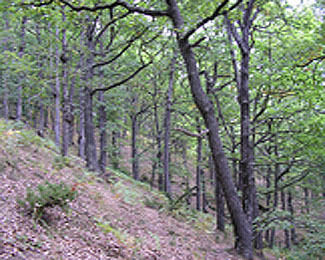The alteration of seasons can worsen the effects of climate change in the Mediterranean region

Researchers Josep Peñuelas, This Rutishauser and Iolanda Filella from the Global Ecology Unit at CREAF-CSIC-UAB explain in the article how the prolongation of this period of activity in deciduous trees can either mitigate or aggravate the effects of climate change. Which way the balance finally tips depends on the amount of water available and the specific characteristics of each region of the planet.
One of the positive aspects of deciduous trees keeping their foliage longer is the fact that through photosynthesis they can absorb more CO2, which in turn helps to clear the atmosphere of this greenhouse gas. Absorbing CO2 gases however implies that the trees must at the same time expel water in the form of vapour. Thus, if there is an increase in the amount of carbon dioxide absorbed, it is absolutely necessary that there be an adequate amount of water in the soil for the trees to maintain this photosynthetic mechanism.
In humid areas, forests can accumulate much water vapour and clouds form as a way to refresh the environment and increase rainfall; these processes grow with a prolonged presence of leafage. However, in areas such as the Mediterranean region, during the dry summer months, trees are exposed to large amounts of radiation but cannot access enough water to transpire and refresh the environment or to generate clouds. This contributes thus to a warmer climate throughout the region. In this situation, a prolonged presence of leafage makes scarcity of water appear even earlier.
At the same time, a prolonged period of plant activity also entails more emissions of volatile organic compounds (VOC) - such as terpenes which are present in many plant aromas – and this could also affect climate change. On the one hand, VOC emissions form aerosols which reduce incident radiation. They additionally act as condensation nuclei for clouds and therefore refresh the environment. On the other hand, an increase in VOC emissions causes a rise in the levels of ozone and methane - both of which are greenhouse gases – found in the atmosphere, which could trigger a rise in the region's temperature.
The authors of the study affirm that there are still many unknown aspects about how the lifecycle of plants affects the climate and in particular the effects it can have on local and regional climates. They also point out the need for further research into these questions. Gaining more knowledge on the effects seasonal alterations can have will be useful in designing more accurate climate models which will provide more precise forecasts.
References
"Phenology feedbacks on Climate Change". J. Peñuelas, T. Rutishauser i I. Filella. Science. vol. 324, 887-888 (2009).


